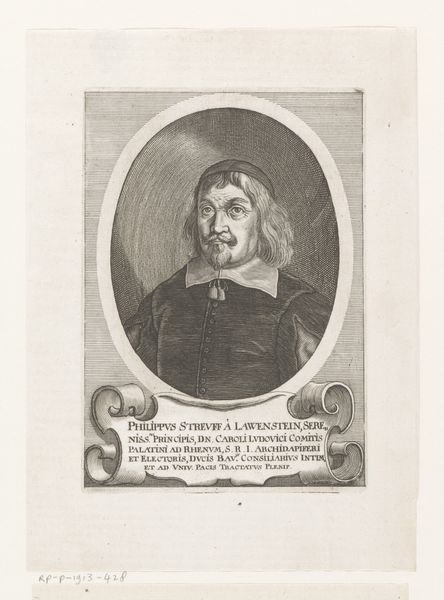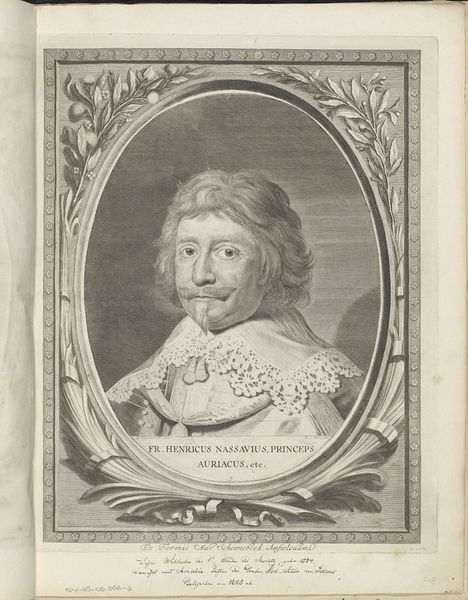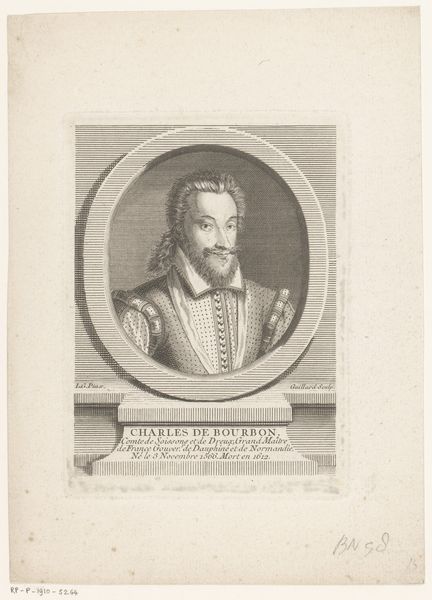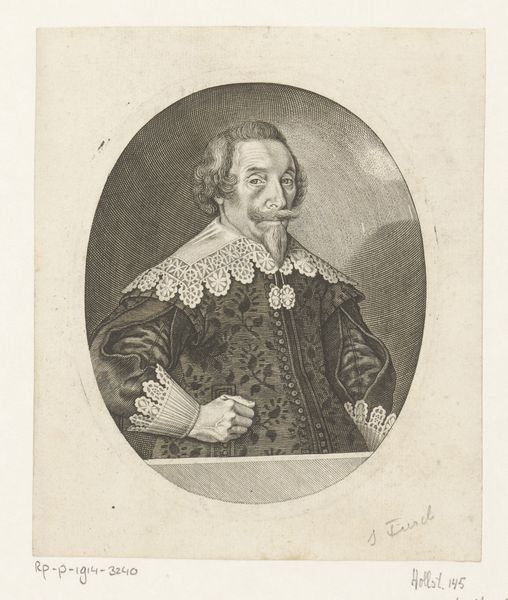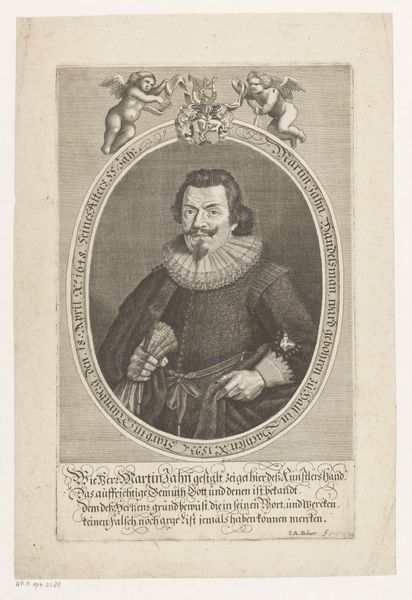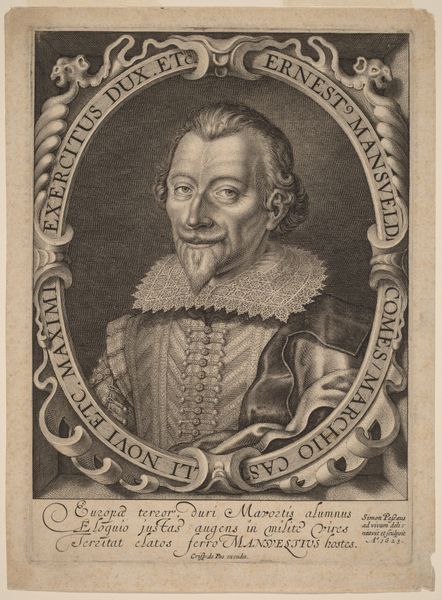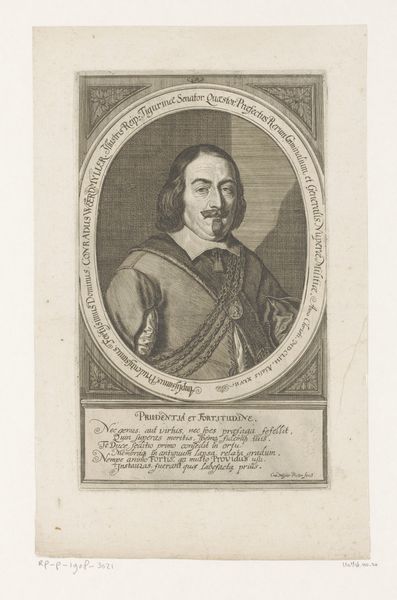
print, engraving
#
portrait
#
baroque
# print
#
engraving
Dimensions: height 151 mm, width 129 mm
Copyright: Rijks Museum: Open Domain
Editor: This is a portrait of Sebastian Bilgerin Zwyer, created in 1748 by David Herrliberger. It’s a print, an engraving. What immediately strikes me is how… serious he looks. Everything, from his gaze to the detailing of his clothing, feels very deliberate and dignified. What do you see in this piece? Curator: Well, consider first what the artist chose to highlight. Zwyer’s attire, for example. The scaled armour piece contrasts sharply with the soft, almost vulnerable, ruffles at his neck. Isn't this visual language revealing a story of power and perhaps a vulnerability underneath? Editor: That’s a great point. The ruffles do seem at odds with the armor, almost like a compromise between different eras or roles. So, how would that translate symbolically? Curator: The armor clearly suggests a military or perhaps aristocratic past, resonating with strength and defense. The ruffles, conversely, introduce a dimension of refinement and possibly even a sensitivity that softens the overall impact. Think about the cultural memory tied to those symbols. Do they challenge our expectations of 18th-century portraiture? Editor: Definitely. We're seeing beyond a straightforward display of status. I’m starting to see this as more of a nuanced portrayal than I initially thought. He isn’t simply defined by his status, the symbols open to other sides of him. Curator: Precisely. And recognizing the inherent duality within symbols unlocks layers of meaning within the work, broadening our understanding. What seems formal can be surprisingly intimate. Editor: This makes me think differently about how artists use symbols—not just for surface meaning, but to reveal more complex truths about their subjects.
Comments
No comments
Be the first to comment and join the conversation on the ultimate creative platform.
